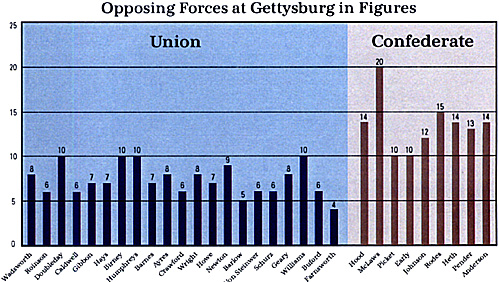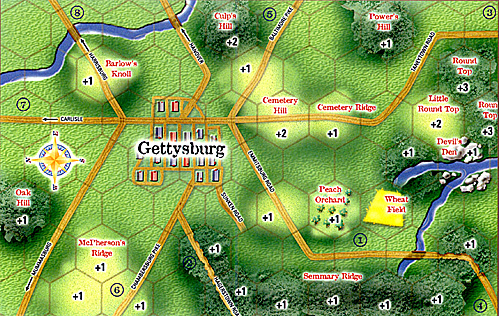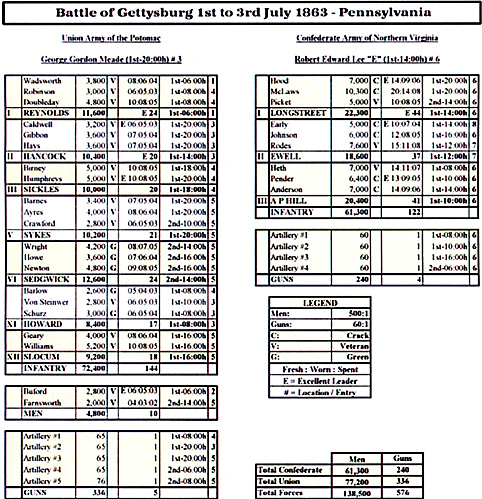Having wargamed with miniatures for close on thirty-eight years, I once promised myself that I would never attempt to write an article for a professional magazine such as the Zouave - so here it is.
A LITTLE BACKGROUND
For the last sixteen years I have lived in Papua, New Guinea, which has a population of 4,000,000 souls and one wargamer - me. I am therefore obliged to play solo, even if they do say that it makes you go blind. There are no model, paint, or terrain shops that cater to the hobby, therefore improvisation and mail order are the only sources available. The most difficult commodity to obtain is inspiration, and this has to come mainly from subscriptions to magazines, a reliable mail order bookseller and a quality miniature supplier. I subscribe to ZOUAVE, have an excellent and reliable source of military books in Nancy Kirkham of Hersants (site is http://www. herbooks.dircon.co.uk) and have recently been purchasing my castings from the Foundry, which also provides an exceptional mail order service.
Most of my life I have wargamed the Napoleonic Peninsular War using French and British castings from Minifigs. I first started "playing" with plastic American Civil War figures made by Airfix when they appeared on the market in the early sixties. I only really discovered the joys of proper wargaming when I happened across the great Donald Featherstone's book WAR GAMES in 1962 at the tender age of thirteen. I still have that book.
THE TEMPTATION
A couple of years back, I saw some photographs of Foundry's 40mm ACW figures on a magazine cover and immediately thought, "I must have them!" Suffice it to say I purchased a considerable quantity direct from the Foundry with Neville Carre's help and without my having made any great study of the American Civil War or having acquired any suitable rules. This was a simple case of putting the cart before the horse, or in my particular case too many horses and no carts. The result was, no fault of Neville's, that I ended up with two identical armies each consisting of 144 infantry, 6 cannon (amply crewed), and 32 cavalry per side along with assorted officers.
It was not until I obtained a copy of F&F and some books from Hersants that I realized that cavalry took less of a part in the major battles than I had provided for. I must admit though that the cavalry castings are beautifully crafted models and, as far as I am concerned, their designers (the Perry Twins) should be canonized. Not only that, for someone who is damn near fifty and whose eyesight is not as good as it was, painting them is a pleasure. When I ordered that much cavalry, I was probably thinking of a British general's (name withheld) remark when asked, "What is the real purpose of cavalry?" and replied that, "They add tone to what would otherwise be a vulgar brawl."
THE RULES AND THE SOLUTION
If I am playing skirmish games, my choice is BROTHER AGAINST BROTHER to which the 40mm figures a admirably suited. For regimental games, my choice is JOHNNY REB 3 and for the larger battles, FIRE AND FURY. So how do I play F&F, primarily designed for 15mm castings, with 40mm figures? My solution was to take the largest battle and see if I could scale down accordingly without losing the flavour of the game. My next project is to do the same with JOHNNY REB 3. In the F&F OOB for Gettysburg, the author states that to fight the entire three days you need 582 infantry stands. At five figures per stand, that is 2,910 castings or at three per stand 1,746. That is a lot of painting and unless you belong to a club, is too large a task for most wargamers. Also, being Scottish, the financial side bears consideration. I presume that George Anderson would second that motion. I took the side with the largest amount of infantry (Union with 77,200) and divided this by 144, the number of infantry castings available for any one side. The basic unit then became the division and was made up of individual figures. For example, Hood's division of 7,000 men consists of 14 figures. My 40mm figures are mounted individually on metal round bases that are close enough to the F&F sizes for a playable game.
 The results are shown in the accompanying chart. All unit effectiveness and decisions on who should be "excellent leaders" are strictly my own subjective judgements.
The results are shown in the accompanying chart. All unit effectiveness and decisions on who should be "excellent leaders" are strictly my own subjective judgements.
Since the idea was to recreate the entire three days, the unit arrival times were based on those of the Avalon Hill board game of the same name. I find their games to be not only eminently playable but also well researched and an extension of our hobby rather than coinpetition to it. I purchased the 125th Anniversary Edition of this when I had the privilege to tour the Gettysburg National Park. To digress, Americans in general know how to look after their heritage and should be congratulated on such. In a sense, each corps leader now performs the functions of a division leader and "Marse Robert" has a chance to get involved instead of just sitting there looking pretty. Even Traveler gets some much-needed exercise.
The resulting game provides a chance to pit a small number of extremely large Confederate units against a greater number of smaller Union units. The "Yanks" have 21 units averaging 7 figures, whereas the "Rebs" have 9 units averaging 14 castings. A chart showing relative strengths by division in castings has been included. Command and Control are paramount. The only problem I had with the rules was the "march column." Twenty figures walking in single file along a pike tends to look somewhat more like a school outing than a military formation. Since all my roads are 70mm wide and accommodate two castings side-byside, I decided to dispense with the "march column" altogether. I have one confession to make on markers. The "low on ammunition" artillery chest was made from a small barrel "acquired" from my daughter's Lego set and suitably painted and disguised. Heaven help me if she ever reads this.
TERRAIN
I'm lucky enough to have a dedicated room for my hobby and the centrepiece is an 8'x 5'table. I use hexes cut from 3/4" plywood which measure 6" along each side. The result is a table consisting of 67 hexagons on the base from which I can create almost any battlefield, albeit somewhat stylistically. I have 144 hexagons in total and can (the old Scottish blood coming out again), paint up both sides of each hex. I have included my "Gettysburg" setup to show what can be done with this type of arrangement. The layout is of necessity a compromise and was loosely based on the original F&F plan. Each hex is geomorphic which accounts for some of the unnatural bends in the roads and streams.
My hexes are all painted light green for clear terrain and dark green for wooded areas. The reason being, I have to make other battlefields out of these as well as Gettysburg, so at the best, they can only be but a pale reflection of the real thing. The idea is to get the flavour of the battleground and show the salient features. On the map, the black numbers with a + sign and a digit (e.g. +1 etc.) denote the elevation and are again only representative. The circled (e.g. 31 etc.) blue numbers are the positions or entry-hexes of the various divisions.
FEEDBACK
The above idea was meant for my own fun and enjoyment, but if sharing it has caused some thought, then it has been worthwhile. Should anyone have any comments (constructive or otherwise)? I would appreciate an email at oneill@globalnet.pq. I must also thank Ivor Janci for his encouragement and Herb Gundt for the dice. 10-siders are not available here, so Herb sent me some.
One last request to Brian Ansell of the Foundry. I realize that the range is now discontinued, but what would it take for some Regular Union Infantry and Zouaves in 40mm scale? Please! Please!!
Good Wargaming!
Jim ONeill has lived in Papua, New Guinea, for the last sixteen years and is the National Sale Manager for a major food processing company He married to Norma, who tolerates his -playing with toy soldiers . , has an eight-year old daugh ter named Iris and a two-year old son named Connor whose sole ambition is to participate destructively in Jim's hobby. Wargaming has been a passion with Jim for as long as he can remember and since he celebrates his 50th birthday this year - that is some memory.


Back to The Zouave Number 50 Table of Contents
Back to The Zouave List of Issues
Back to Master Magazine List
© Copyright 1999 The American Civil War Society
This article appears in MagWeb (Magazine Web) on the Internet World Wide Web.
Other military history articles and gaming articles are available at http://www.magweb.com